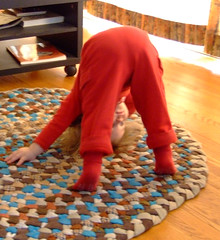Sometimes when kids are learning new routines, schedules or chores they start off strong… and then hit a series of bumps in the road. Cooperation is replaced by: “I forgot.” “I don’t want to.” “I can’t.” With a families’ busy schedules, this phenomenon can be particularly frustrating if you’ve begun to rely on your child taking care of this particular activity without supervision… or we can use it as a chance to build work out our “choice” muscles.
[Tweet “If you don’t want to go “back to square one” consider giving kids choices. Lots of them.”]
That’s right, if you don’t want to go “back to square one,” consider giving the kids some choices. Lots of them. I’m not talking about “will you” or “won’t you”, “yes” or “no”, or any other potentially polarizing choice… but one that works more like an open question does.
Let’s assume that the resistance is showing up around bedtime.
- “Are you planning to take your shower tonight or in the morning?”
- “Are you going to brush your teeth before or after you put on your jammies?”
- “Do you want the red pajamas or the yellow ones?”
- “Do you want Aunt Cindy to read your story or do you want me to do it?”
- “Do you want to hear Goodnight Moon or The Lorax?”
You get the idea. It’s also a great way to model choice-making.
[Tweet “”Do you want the red pajamas or the yellow ones?” Choices. Lots of them.”]
Whether about bedtime, tooth brushing, walking the dog or taking out the trash, you have an opportunity to avoid the heated discussion for which your child has prepared. Instead, you’re giving choices… not about IF the activity will be accomplished but HOW.
When invited to an argument, using this strategy can help a parent choose not to attend. That’s a powerful model… and a skill that will serve them well for a long, long time. The choice is yours.



